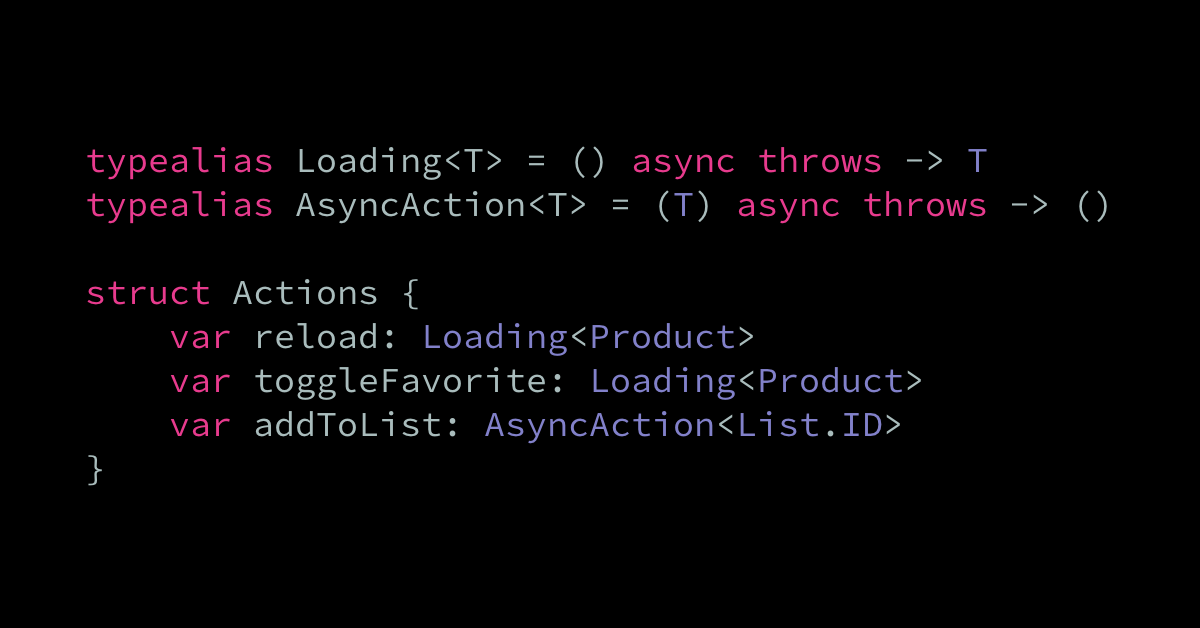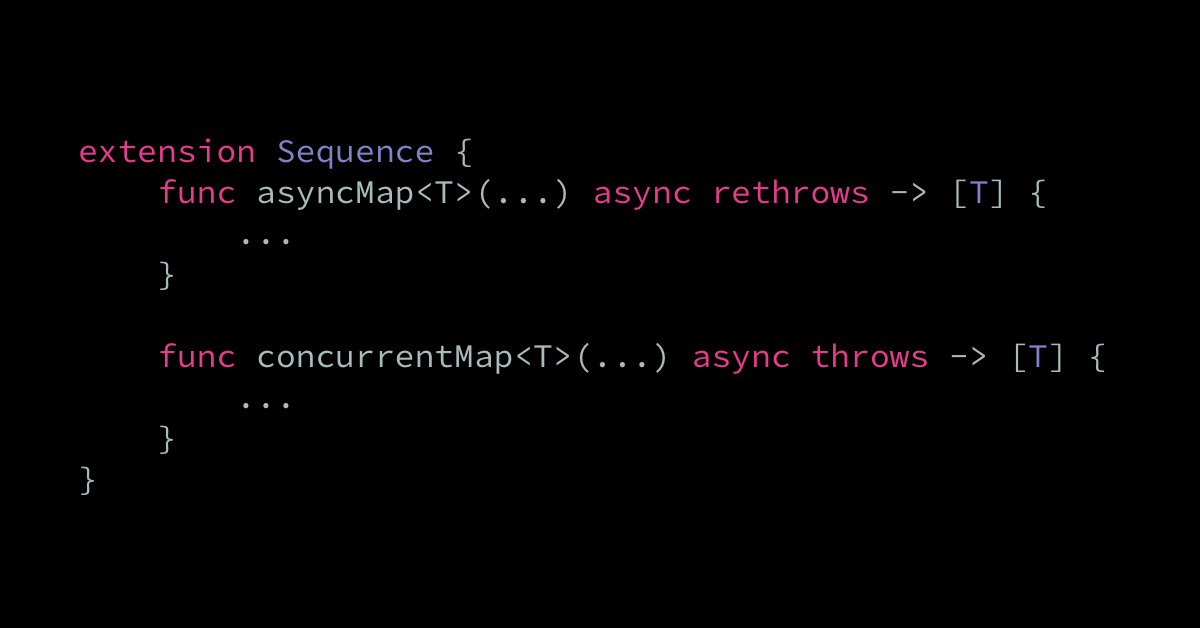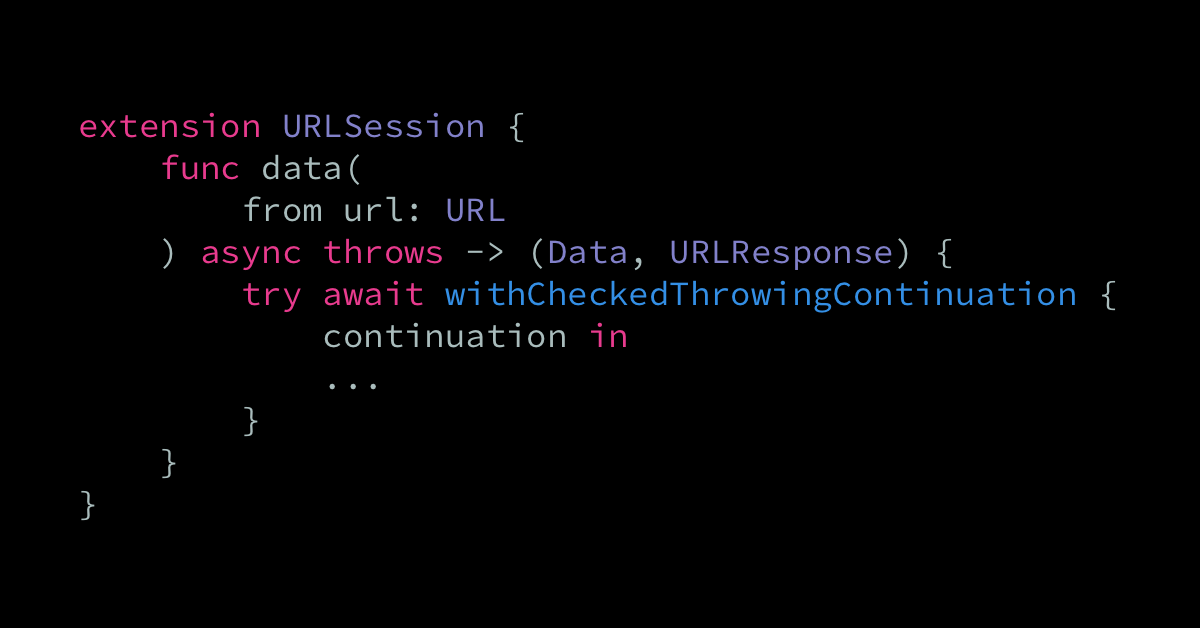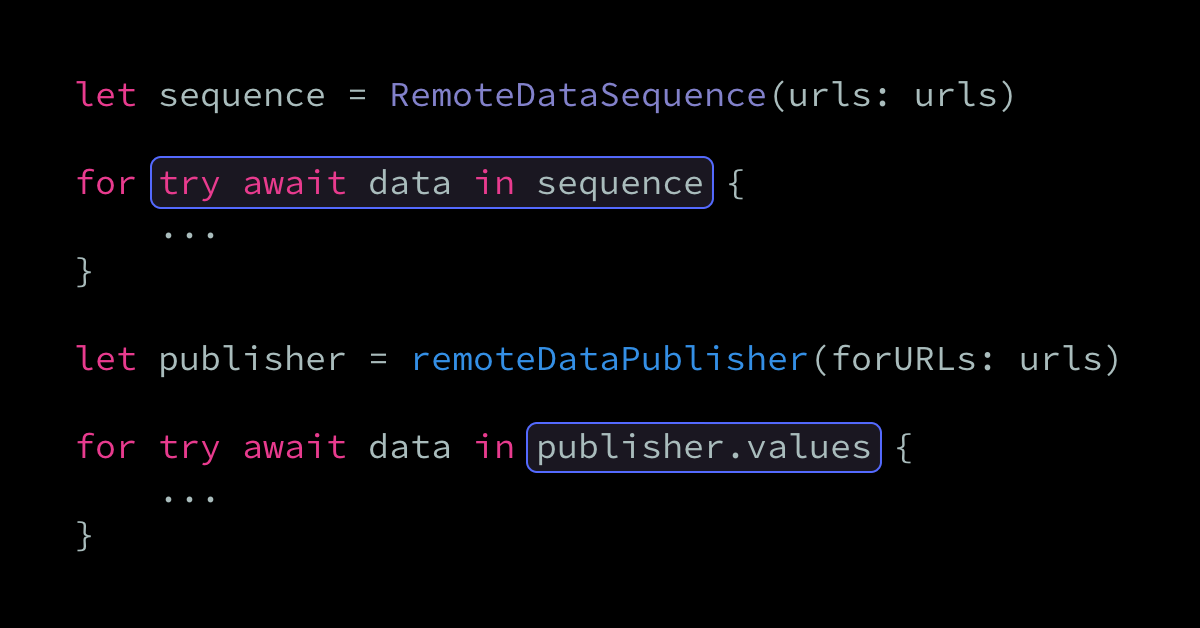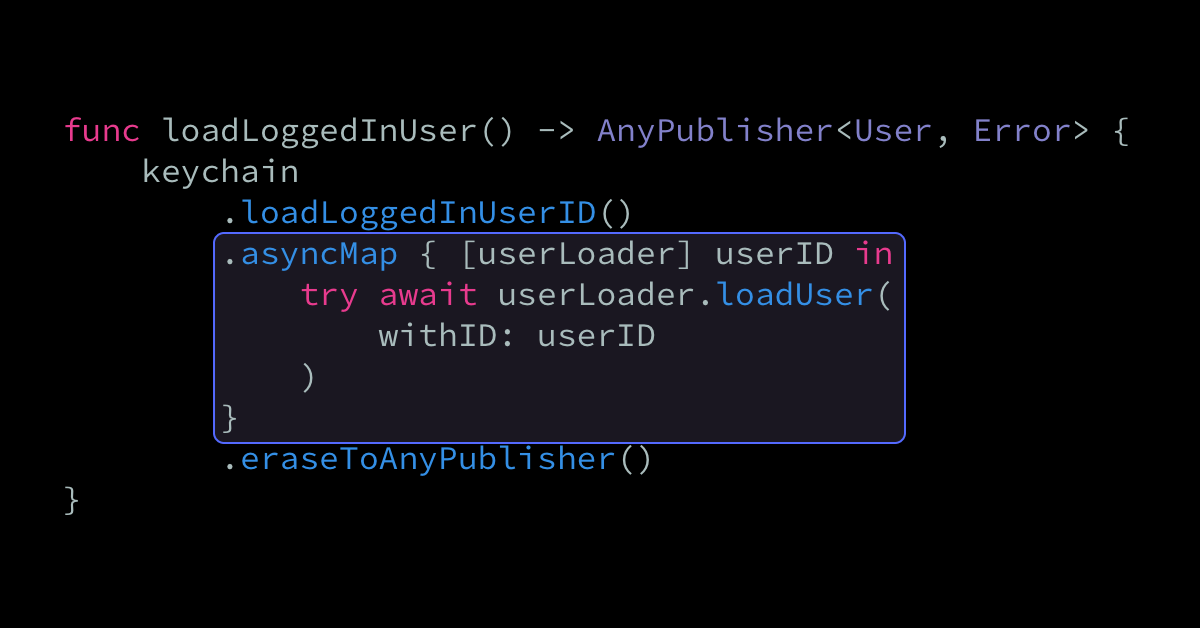It is not often when we need to wrap an async function with a completion handler. Typically, the reverse is what happens. This need can happen in codebases where the public interface can’t change just right now, but internally it is moving towards async-await functions. Let’s jump in and see how to wrap an async […]
Very often, making code easy to unit test tends to go hand-in-hand with improving that code’s separation of concerns, its state management, and its overall architecture. In general, the more well-abstracted and organized our code is, the easier it tends to be to test it in an automated fashion. However, in an effort to make […]
If we think about it, so much of the code that we write on a daily basis essentially consists of a series of data transformations. We take data in one shape or form — whether that’s actual model data, network responses, or things like user input or other events — we then run our logic […]
Although Swift 5.5’s new concurrency system is becoming backward compatible in Xcode 13.2, some of the built-in system APIs that make use of these new concurrency features are still only available on iOS 15, macOS Monterey, and the rest of Apple’s 2021 operating systems. For example, if we try to use the new async/await-favored version […]
When iterating over any Swift collection using a standard for loop, there are two key components that decide what elements that will be passed into our iteration code — a sequence, and an iterator. For example, Swift’s standard Array type is a sequence, and uses IndexingIterator as its iterator type. While we very often interact […]
When starting to adopt Swift’s new async/await feature, we’re likely going to have to find ways to connect and bridge that pattern to any existing asynchronous code that we’ve already written within a given project. Earlier this week, we took a look at how that can be done when it comes to completion handler-based APIs, […]

